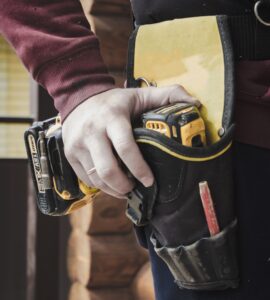A roof vent is one of the most important parts of any roof system. Roof vents help air move through the attic and other parts of the house, keeping the humidity and temperature stable. Whenever a roof is replaced, one or more of these vents may need to be replaced. It’s important to know the different kinds of vents, why they’re used, and how they work. Roof vents maintain the longevity of your roof, they sometimes need to be resealed or checked out to make sure you only need a roof replacement every 15-20 years or after serious roof damage caused by hail.
Common types of roof vents installed in Minnesota:
- Box Roof Vents
- Ridge Vents
- Off Ridge Vents
- Powered Vents
- Solar powered roof vents
- Wind powered roof vents
- Electric roof vents
- Cupola RoofVents
- Intake Vents
- Gable
- Soffit
- Drip edge vents
- Over fascia vents
Here are some of the most common types of roof vents found on homes around Minneapolis. This includes both intake and exhaust vents. Exhaust vents let hot air escape from the top of the house, while intake vents let clean, fresh air come in. Both types of roof vents are necessary to maintain the lifespan of your roof and prevent needing roof repairs or an untimely roof replacement. Minneapolis roofs need both, as we get both extremes of hot and cold weather.
Box Roof Vents
Box vents are also sometimes called Louver Vents. Box vents get their name from the way they look, like small boxes on the roof, you’ve probably seen them on many roofs in Minneapolis. Box vents are usually put across different parts of the roof in groups. These roof vents can be put in a variety of places, including smaller parts of the roof, and work well in places where ridge vents don’t work. Box roof vents are easy to install wherever ventilation is needed on the roof. Box roof vents tend to fit well with the roof structure and don’t stick out too far above the roof line. When roofs have more complicated structures, ridge vents are less useful so box roof vents make a good alternative.
Ridge Roof Vents
Ridge vents are on the roof ridge, where the two parts of the roof meet. Most of the time, these common roof types are large and cover a large part of the ridge. Due to their size and location, ridge vents make it easier for hot air to move out of the building. This is a key part of keeping a home cool in the summer. Ridge vents are very efficient at maintaining constant, even airflow is one of the benefits of ridge vents. Blends in with the roof, which makes them hard to find.
Off Ridge Vents
These vents are common on roofs and are usually placed just below the ridge of the roof. They let hot air out in a different way than a traditional ridge vent, but they still do the same thing. Most of the time, they are on smaller homes or in places where the ridge vents are short. Often, they look like a metal ridge that sticks out from the roof.
Off ridge vents benefits include:
Roof vents are harder to put in than these.
Not just along the ridge, but anywhere on the roof
Powered Roof Ventilation:
Some vents in homes are powered, but most are powered by the wind and airflow. These vents are hard-wired into the structure of the roof and can help move air and heat around the space in a much more useful and efficient way. Some are only turned on when needed, like during the hot summer months, while others are always on to keep the air moving. But they need electricity and can pull too much cool air out of your home in the summer, which can make your costs go up.
Some of the benefits of powered vents are:
- It is possible to get a lot of airflow.
- work without having to use wind
Solar Power Roof Ventilation
Solar-powered attic vents are a great choice for some homes. They are made to get their power from the sun, so there is no need to hard wire them. So, they can help cut down on how much it costs to run a motorized fan. They do make noise and aren’t always as reliable, especially if you live in an area that doesn’t get much sun or if they are in the shade. But they work well to let air into the attic, which is something that many homes need. In terms of energy efficiency, solar powered roof vents are better than hard-wired roof vents. If you don’t hardwire, installation costs of solar roof vents are less.
Roof Turbines
Roof turbines are fairly common when it comes to roof vents that let air out. Since these are powered by wind, they keep going as long as there is wind to move them. As they turn, they pull hot air out of the house and let cooler air in. So, the main problem with these vents is that there isn’t enough wind. Even though they don’t need much wind to work, a day with no wind will make them less useful and effective overall.
Roof turbines have benefits like:
Easy to find and put in place
Used often, with good reliability in most places.
Can effectively cut down on the amount of moisture in the attic
Cupola Roof Vents
Usually a staple for a classic old barn style, cupola vents are another type of roof vent that makes the roof stand out more. The most common style is the square cupola roof vent. Most of the time, these are put on the roof line of the house and have their own louvers and roof structure. They look like a small house on top of the house, but they come in many different styles. Some have big openings, which can help a room get the most airflow possible. As big parts of the roof, they are often a part of the design as well.
Some of the good things about cupola vents are:
The home gets some beautiful architectural details.
They are more appealing and may raise the value of the property.
Many of them have a lot of ventilation.
Intake Vents
Most homes also have a number of intake vents, or vents that help bring air into the house. There are four main types, which are:
- Ventilation for soffits: Placed on the soffit or roof overhang of a house.
- Gable vents: A triangle-shaped vent on the side of a house, though they are less common and more likely to be found on older homes.
- Over fascia vents are newer and are made for homes that don’t have large eaves to fit soffit vents.
- Drip edge vents are found under the first row of shingles on the underside of the roof’s drip edge
Every roof vent is an important part of keeping the roof on your house in good shape. Mold and mildew can grow in this space if it doesn’t get enough air flow, and too much heat can damage your shingles. Don’t forget to put these vents in the right places and keep them in good shape. If you are not sure the last time your roof’s vents were resealed it is important to schedule a roof inspection with a local roofing company. All reputable Minneapolis roofing companies offer roof inspections for free.





